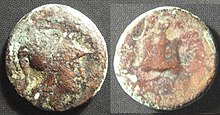Copyright © 2024 MATHAKADARA – All Rights Reserved.
10 things you did not know about Pomegranate
10 things you did not know about pomegranate


After the pomegranate is opened by scoring it with a knife and breaking it open, the seeds are separated from the Peel and from the internal pulp membranes.Separating the seeds is easier in a bowl of water because the seeds sink and the inedible pulp floats. Freezing the entire fruit also makes it easier to separate. Another effective way of quickly harvesting the seeds is to cut the pomegranate in half, score each half of the exterior rind four to six times, hold the pomegranate half over a bowl, and smack the rind with a large spoon. The seeds should eject from the pomegranate directly into the bowl, leaving only a dozen or more deeply embedded seeds to remove.

A stall selling pomegranate juice in Xian:s, China
Pomegranate juice can be Sweet or Sour, but most fruits are moderate in taste, with sour notes from the acidic ellagitannins contained in the juice. Pomegranate juice has long been a popular drink in Europe and the Middle East, and is now widely distributed in the United States and Canada.

A bowl of Ash-e Anar, an Iranian soup made with pomegranate juice
Before tomatoes (a New World fruit) arrived in the Middle East, pomegranate juice, molasses, and vinegar were widely used in many Iranian foods, and are still found in traditional recipes such as ,fesenjan. a thick sauce made from pomegranate juice and ground walnuts, usually spooned over duck or other poultry and rice, and in ash-e anar (pomegranate soup).

Pomegranate seeds are used as a spice known as Anar Dana (from Persian: Anar Dana, pomegranate + seed), most notably in Indian and Pakistani cuisine. These seeds are separated from the flesh, dried for 10–15 days, and used as an acidic agent for chutney and curry preparation. Ground anardana is also used, which results in a deeper flavoring in dishes and prevents the seeds from getting stuck in teeth. Seeds of the wild pomegranate variety known as Daru from the Himalayas are regarded as high-quality sources for this Spice. still contain some residual water, maintaining a natural sweet and tart flavor. Dried seeds can be used in several culinary applications, such as trail mix, granola bars, or as a topping for salad, yogurt, or ice cream.

Turkish lamb chops with candied figs and herbed mashed potatoes, garnished with Pomegranate. In Turkey, pomegranate sauce is used as a salad dressing, to marinate meat, or simply to drink straight. Pomegranate seeds are also used in salads and sometimes as garnish for desserts such as Güllaç. Pomegranate syrup or molasses is used in muhammara, a roasted red pepper, walnut, and garlic spread popular in Syria and Turkey. In Greece, pomegranate is used in many recipes, including kollivozoumi, a creamy broth made from boiled;wheat,pomegranates, and raisins, legume salad with wheatandpomegranate, traditional Middle Eastern lamb kebabs with pomegranate glaze, pomegranate eggplant relish, and avocado-pomegranate dip.
Pomegranate is also made into a liqueur, and as a popular fruit confectionery used as ice cream topping, mixed with yogurt, or spread as jam on toast.
Ancient and Modearn Greece
The Greeks were familiar with the fruit far before it was introduced to Rome via Carthag ,and it figures in multiple myths and Artworks. In Ancient Greek mythology, the pomegranate was known as the “fruit of the dead”, and believed to have sprung from the blood of Adonis. The myth of Persephone, the goddess of the Underworld, prominently features her consumption of pomegranate seeds, requiring her to spend a certain number of months in the underworld every year. The number of seeds and therefore months vary. During the months that Persephone sits on the throne of the underworld beside her husband Hades, her mother Demeter mourned and no longer gave fertility to the earth. This was an ancient Greek explanation for the seasons. According to Carl. Ruck and Danny Staples, the chambered pomegranate is also a surrogate for the poppy’s narcotic capsule, with its comparable shape and chambered interior. On a Mycenaean seal illustrated in Joseph Campbell‘s Occidental Mythology (1964), figure 19, the seated Goddess of the double-headed axe offers three poppy pods in her right hand and supports her breast with her left. She embodies both aspects of the dual goddess, life-giving and death-dealing at once. The Titan Orion was represented as “marrying” Side, a name that in Boeotia means “pomegranate”, thus consecrating the primal hunter to the goddess .In the fifth century BC, Polycleitus took ivory and gold to sculpt the seated Argive Hera in her temple. She held a scepter in one hand and offered a pomegranate, like a “royal orb“, in the other About the pomegranate I must say nothing,” whispered the traveller Pausanias in the second century, “for its story is somewhat of a holy mystery.” The pomegranate has a calyx shaped like a crown. In Jewish tradition, it has been seen as the original “design” for the proper crown.
Girl with a Pomegranate, by William- Adolphe Bouguereau, 1875
Jewish Torah ornaments in the shape of pomegranates In modern times, the pomegranate still holds strong symbolic meanings for the Greeks. When one buys a new home, it is conventional for a house guest to bring as a first gift a pomegranate, which is placed under/near the Ikonostasi of the house, as a symbol of abundance, fertility, and good luck. When Greeks commemorate their dead, they make kollyva as offerings, which consist of boiled wheat, mixed with sugar and decorated with pomegranate. Pomegranate decorations for the home are very common in Greece and sold in most home goods stores




